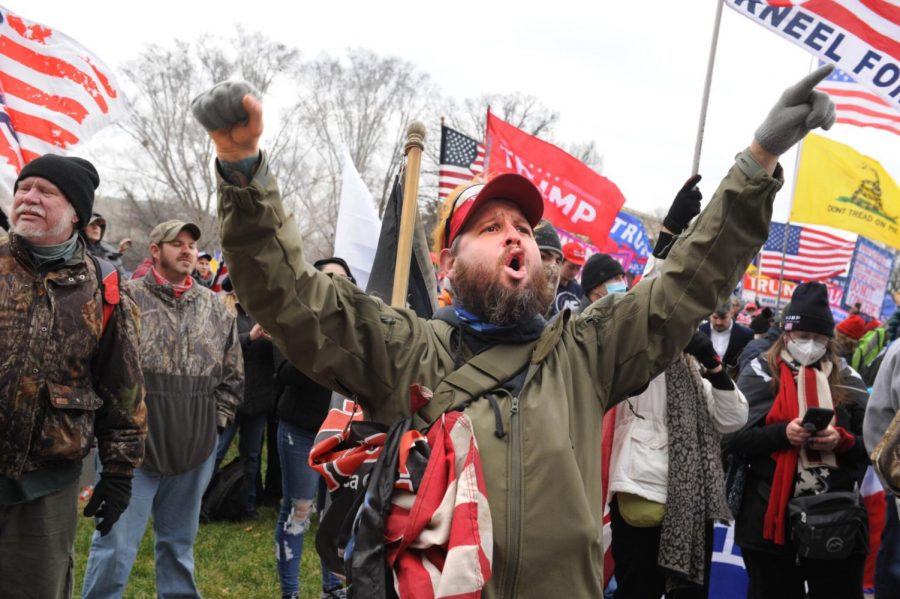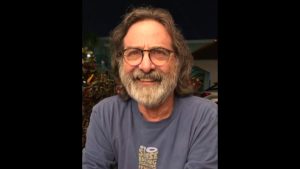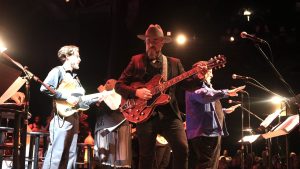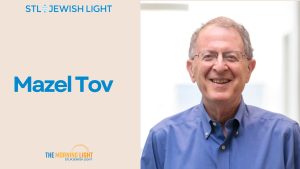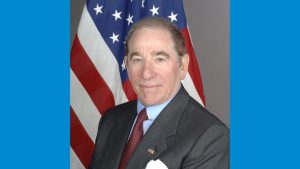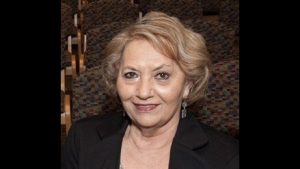Condemn rioters, not the whole party
Published January 28, 2021
The best definition of education I ever heard was provided by a University of Missouri-St. Louis colleague: “getting students to learn to cope with ambiguity.”
This applies to anyone trying to understand some happening. The point here is that, although some reality may be clearly black or white, most reality is gray and complicated.
Given the current polarization of the country, we have lost our capacity for nuance and for examining all sides of an argument. Let’s apply this observation to the so-called insurrection of Jan. 6, when then-President Donald Trump was accused of inciting a riot at the Capitol building in Washington, aimed at disrupting the Electoral College vote count by Congress that was about to formalize Joe Biden’s 2020 election.
I am among the at least 90% of Americans who saw the violent storming of the Capital as horrific and inexcusable — one of the worst acts of anti-democratic behavior in the nation’s history — and punishable by the most severe penalties available. In other words, when it comes to condemning the perpetrators, it is pretty black and white in terms of clarity.
Or so it seemed. If one relied on CNN, The New York Times and almost all mainstream (liberal) media, one came away believing that only half the country was appalled by the incident, with not only an estimated 50,000 protestors on the Washington Mall but, indeed, the 74 million voters who supported Donald Trump lumped in with the thugs who committed the violence. This is the narrative that has dominated the reporting.
In the interest of learning to cope with ambiguity, let me offer a counter-narrative.
First, following the killing of George Floyd by police in Minneapolis in May, there were almost daily Black Lives Matter protests across America — in Minneapolis, Chicago, New York, Seattle, Portland, St. Louis and dozens of other cities — where major violence was committed that included arson, looting, and attacks on police and civilians.
Just as there was no evidence that the majority of the BLM protestors participated in this violence, likewise there is no evidence that most of the demonstrators assembled on the Washington Mall on Jan. 6 were involved in the violence. What the liberal media called during the summer “mostly peaceful protestors” applied also to Jan. 6, even if the same media refused to concede the point.
If you wish to get a first-hand, eyewitness view of the events as experienced by one of the Jan. 6 protestors — a view you will not get from our liberal media — see “What I Saw at the Save America Rally in Wash, D.C.” by Jenni White in The Federalist.
Second, if Donald Trump can be accused of inciting violence on Jan. 6, the same can be said for Nancy Pelosi, Jerry Nadler and other Democratic leaders, who generally dismissed the summer violence rather than clearly and consistently condemning it. For example, asked about the destruction of a Columbus statue in Baltimore and whether its removal should be decided by “a mob in the middle of the night,” Pelosi cavalierly said, “People will do what they do.” Nadler, asked about antifa violence in Portland and elsewhere, said “that’s a myth.”
Granted, the breach of the Capitol was an especially egregious act of political violence. Readers should not accuse me of equating it with Kenosha. Still, recall how there was little Democratic condemnation when left-wing extremists vandalized Lafayette Park across from the White House, injured over 150 police officers and threatened the White House seriously enough for the Secret Service to feel it necessary to escort the president to his basement bunker.
In other words, liberals generally blew off the summer street violence. In the process, they arguably helped internalize political violence as an acceptable norm in pushing for change and thus contributed to the violence of Jan. 6. Why was it OK for BLM protestors, including left-wing extremists, to assemble in mass protests and commit mayhem, but not right-wing groups?
There should not be a double standard in calling for the arrest of thugs and anarchists, whether on the right or the left. Liberal critics have contended that, had the Jan. 6 protestors been BLM protestors and mostly black, they would have been treated more harshly by Capitol police. True, there was a colossal security failure and lax response to the Capitol assault, but anyone watching the looting and burning of American cities during the summer also was left wondering why the police mostly stood idly by and allowed the criminal activity to occur with few arrests.
Third, although Donald Trump can be rightly criticized for reckless behavior in continuing to challenge his electoral defeat even after courts reaffirmed Biden’s election, and in stoking the anger of protestors when he appeared on the Mall Jan. 6 to address his supporters, did his behavior really rise to the level of “treason” and an “impeachable” offense? Recall Hillary Clinton also claimed the election was “stolen” from her in 2016. Moreover, much of the Democratic Party immediately called for “resistance” against Trump in 2016 and spent the next four years questioning the legitimacy of a duly elected president, including the Russian collusion hoax and other efforts to oust him.
We should be more careful throwing the words “coup attempt” around.
In his speech on the Mall, Trump uttered words not widely reported in the media. He said, “I know that everyone here will soon be marching over to the Capitol building to peacefully and patriotically make your voices heard.” True, he also said his supporters should “fight like hell.” I am guessing there is not a single elected representative at any level of government who has not said at some point in his career that he will “fight” for his constituents, or urged his constituents to “fight” for what they believe in. Trump went on to say, “We have to have peace, we have to have law and order. . . . We don’t want people hurt.”
So, yes, Trump is a villain in this affair. Good riddance. But let’s also rid ourselves of simplistic, one-sided analysis.
It is not ambiguous that we have a severely divided, terribly torn country. That is a clear fact. However, the best way to heal the divide is for thoughtful people on both sides to concede that the 80 million Biden voters have legitimate concerns along with the 74 million Trump voters who deserve to be treated with respect rather than labeled as “deplorables” or worse, and that we need to move on in the post-Trump era.
J. Martin Rochester, Curators’ Distinguished Teaching Professor of Political Science Emeritus at the University of Missouri-St. Louis, is the author of 10 books on international and American politics.



